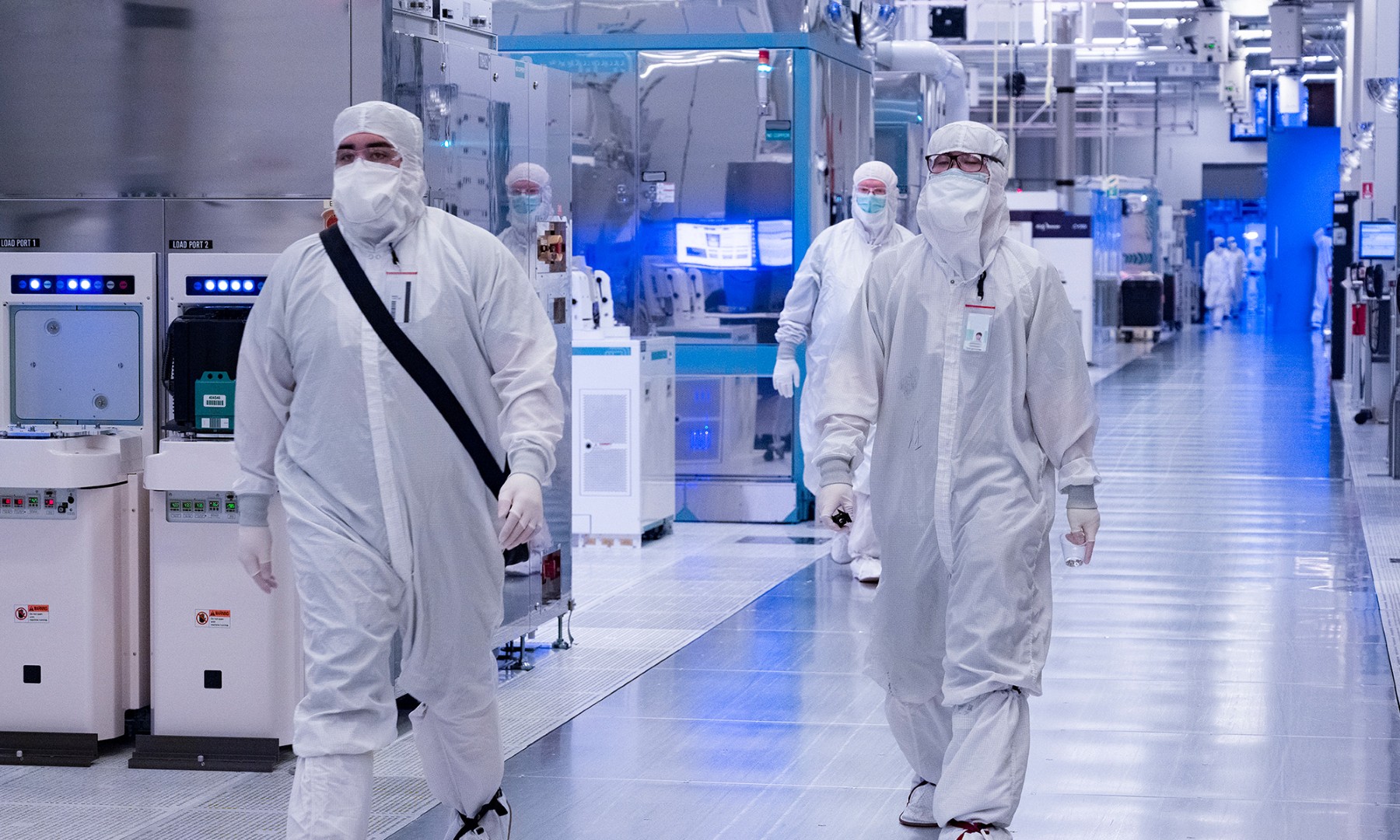At chip giant Intel's (INTC +3.41%) 2017 investor meeting, management revealed that the company would be fundamentally changing how it develops its data center products.
In a nutshell, Intel previously ramped up its new chip manufacturing technologies by building products for personal computers. Later, after a technology matured, the Data Center Group (DCG) would start using it.

Image source: Intel.
That's not going to be the case going forward. Now, the DCG will use those new manufacturing technologies first, with the Client Computing Group (CCG) following later.
This is a sensible strategy. Intel is expected to face substantially tougher competition in DCG, so putting its highest-tech manufacturing into that segment seems like a natural way to bolster its position where it most needs strength.
Manufacturing technology can have a significant impact on the cost structure and competitiveness of a product, particularly in the world of data center chips. In terms of timing, Intel says that DCG will be the first segment within Intel to use its third-generation 10nm technology, marketed as 10nm++. It'll also be, per Intel, the first to use the company's upcoming 7nm technology, slated to launch in either 2020 or 2021.
While the impact on the company's products won't be visible for years, this fundamental shift is already impacting the financial results of DCG.
A large impact last quarter
Intel provided an "operating income reconciliation" table in its form 10-Q filing to show how Intel's DCG went from generating $1.77 billion in operating income in Q2 2016 to $1.66 billion in operating income last quarter.
The company said that "higher DCG operating expense, primarily on increased share of technology development and MG&A costs" was responsible for a $210 million year-over-year hit to operating income.
Now, this number isn't a "pure" representation of the magnitude of the manufacturing technology research and development shift, since it includes an MG&A -- that is, marketing, general and administrative -- impact.
However, in the same operating income reconciliation table for Intel's CCG (which, remember, will be going from the lead user of new manufacturing technologies to a lagging user), the company says that operating income there was positively impacted to the tune of $145 million due to this shift.
Since the shift from one segment to the other is just a question of allocation of expenses that are already there (in other words, a zero-sum game), I believe that the $145 million number is an accurate representation of the magnitude of the shift in technology-development burden from CCG to DCG.
Additionally, Intel says that DCG suffered a $220 million reduction in operating income from a year ago due to "higher factory start-up costs, primarily driven by the ramp of [Intel's] 10nm process technology."
This $220 million is a figure that would've been allocated to CCG had Intel not made the manufacturing technology priority shift.
In aggregate, the impact to DCG appears to be about $430 million. On the flip side, by shifting this burden to DCG, Intel's CCG -- which the company has indicated to investors will be optimized for profitability going forward -- gets a break.
Remember, though: This money would've been spent no matter what, so this shift doesn't impact Intel's total profitability. In the near term, it only impacts how profitable each segment looks.
Intel's long-term goal in doing this, though, is clearly to maximize its profitability. The company likely believes that it can do that by giving DCG every competitive edge that it can get, and it's probably right.






